Drawer Slides for Every Budget
Undermount, soft-close slides are a cabinetmaker's dream, but lower-cost options can be reliable when installed with care.
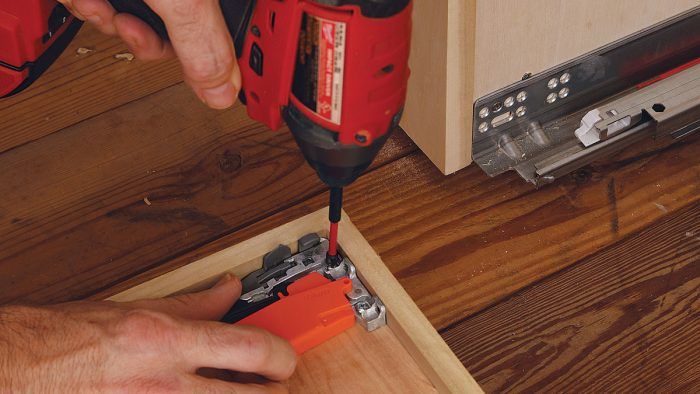
Synopsis: This look at drawer slides includes cabinetmaker Ben Scott’s five recommendations for different applications and budgets. He includes both a heavy-duty and a budget side-mount option, as well as three undermount options with different features for adjustment. For each slide, he describes pros and cons as well as important installation details.
With over 21 years in the custom cabinet and furniture industry, I’ve used most of the drawer slides on the market, but now my shop only uses undermount soft-close slides. Their smooth operation, weight capacity, and adjustments in all directions make up for any cost savings that come with a lesser slide. But not every budget has room for the most-expensive slides available, so in this look at drawer slides, I included some lower-cost options that I’ve had good success with. The two low-cost options are a bit more finicky to install because they lack built-in up/down and tilt adjustments, but they are very reliable when installed with care. The more-expensive slides have built-in adjustments and ultrasmooth operation. And they mount on the drawer bottom instead of the sides, so they’re hidden from view when the drawer is open, letting the craftsmanship you put into your drawer boxes shine instead of the hardware.
One of the keys to drawers that operate smoothly is getting the slides installed on the cabinet box at the same height and square to the front of the case on both sides. Drawer boxes must also be made the correct size. Using metric measurements makes both of these tasks easier, because all the drawer-box measurements and slide layouts are in millimeters. Good metric tape measures and rulers are available from Lee Valley.
We use an adjustable Blum jig to drill the holes for the slides at the needed height; it is quite costly, but it saves a lot of time. You can also lay out the slide mounting holes on a plywood or MDF template and use it to drill the holes in the cabinet sides before attaching the slides. The slide dimensions here fit a 24-in.-deep cabinet, and the prices include a pair of slides and the locking devices for the drawer box. The Grass prices include the rear drawer-box mounting brackets as well.
Get with the system
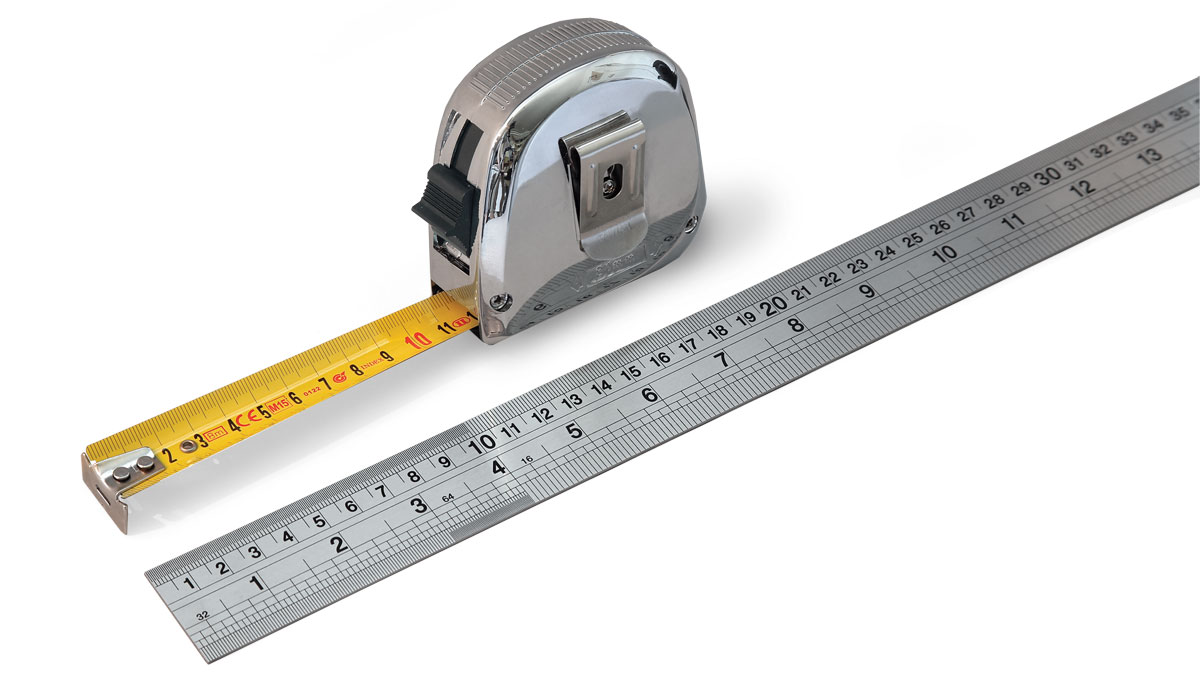
The most accurate way to install slides and build drawer boxes is to use millimeters. An 8-meter tape measure is useful for breaking down plywood and other panel products. A 3-ft. cabinetmaker’s rule includes metric measurements and is useful for precision work.
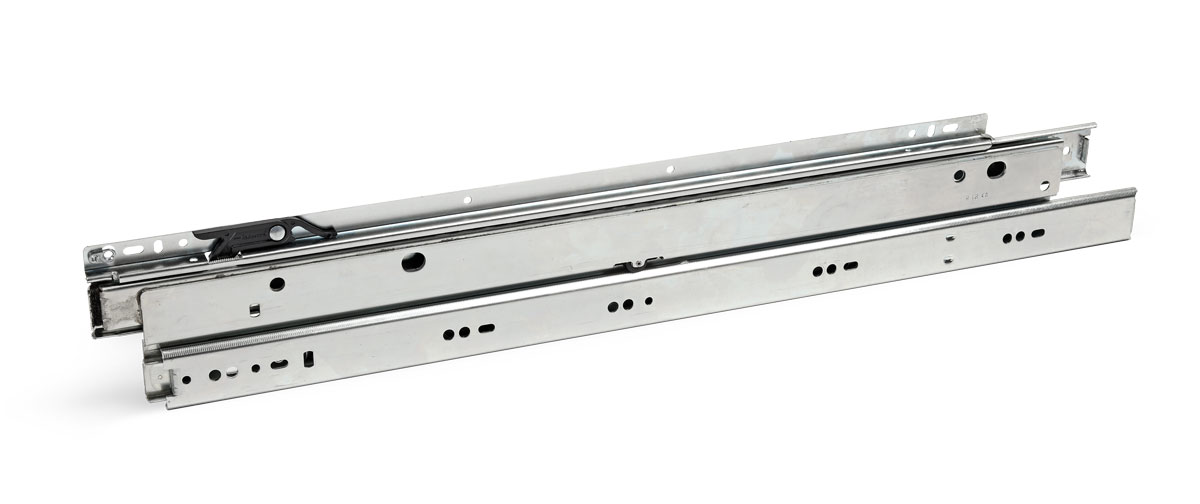
Heavy Duty Accuride 4034 side mount
Model no. C403422D
Length 22 in.
Load rating 150 lb.
Price $35 per pair
These are standard slides for commercial projects. They operate well, are fairly smooth-running, and have a good load capacity. This model is not self- or soft-close—you have to push the slides closed and a detent holds them shut. There are soft-close models, but in my experience, they don’t operate very well, and the added cost comes to nearly the same as heavy-duty undermount slides. Drawer boxes can be made with a plant-on bottom or grooved-in bottom, but because the slides mount to the sides of the drawer box, a plant-on bottom can pull off if it isn’t well-attached.
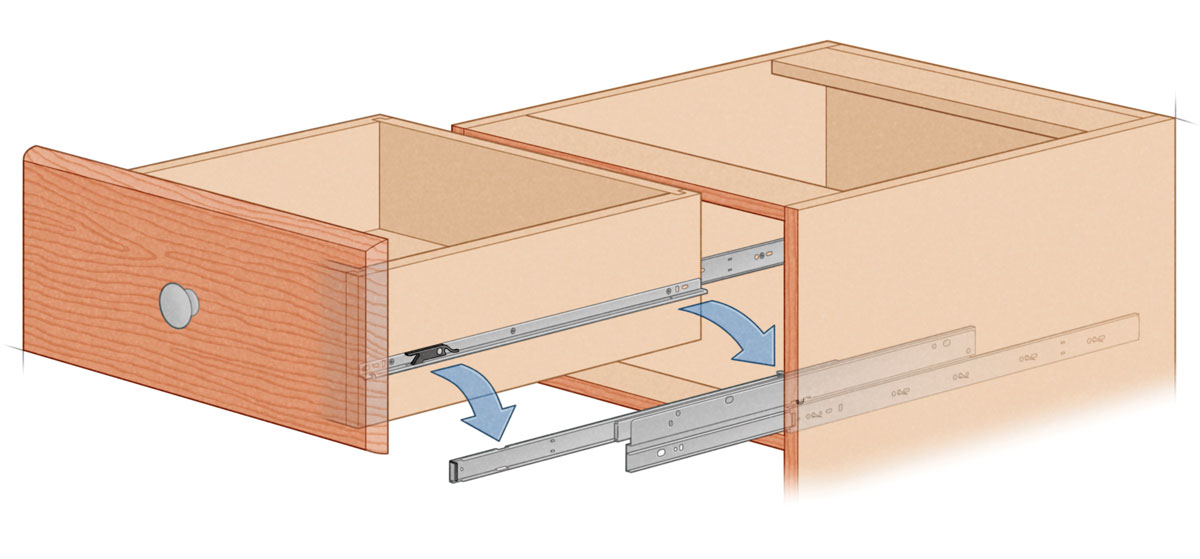
Side clearance is 1-1⁄16 in. smaller than the opening. We typically use veneer core plywood for our drawer boxes, with a 3⁄4-in. front and back and 1⁄2-in. sides, doweled together. The 1⁄2-in. material is usually 1⁄32 in. undersized, so we cut the front and back of the drawer box 2 in. smaller than the inside of the cabinet. The undersized 1⁄2-in. material provides the additional 1⁄16-in. clearance needed. The slides must be straight on the cabinet and the drawer for proper operation. The downsides are a lack of adjustments and side-to-side racking on wide drawers.

No frills Blum 230M side mount
Model no. 230M5500
Length 22 in.
Load rating 55 lb.
Price $7
These are the lowest-price standard drawer slides. They work well and are self-closing—when the drawer is almost closed they ramp into the closed position. They are easy to install on the drawer box by either screwing to the underside or to the outside. The slides wrap under the drawer so you can use a plant-on bottom without risking the drawer bottom pulling off. Drawer boxes are 1 in. narrower than the drawer opening.
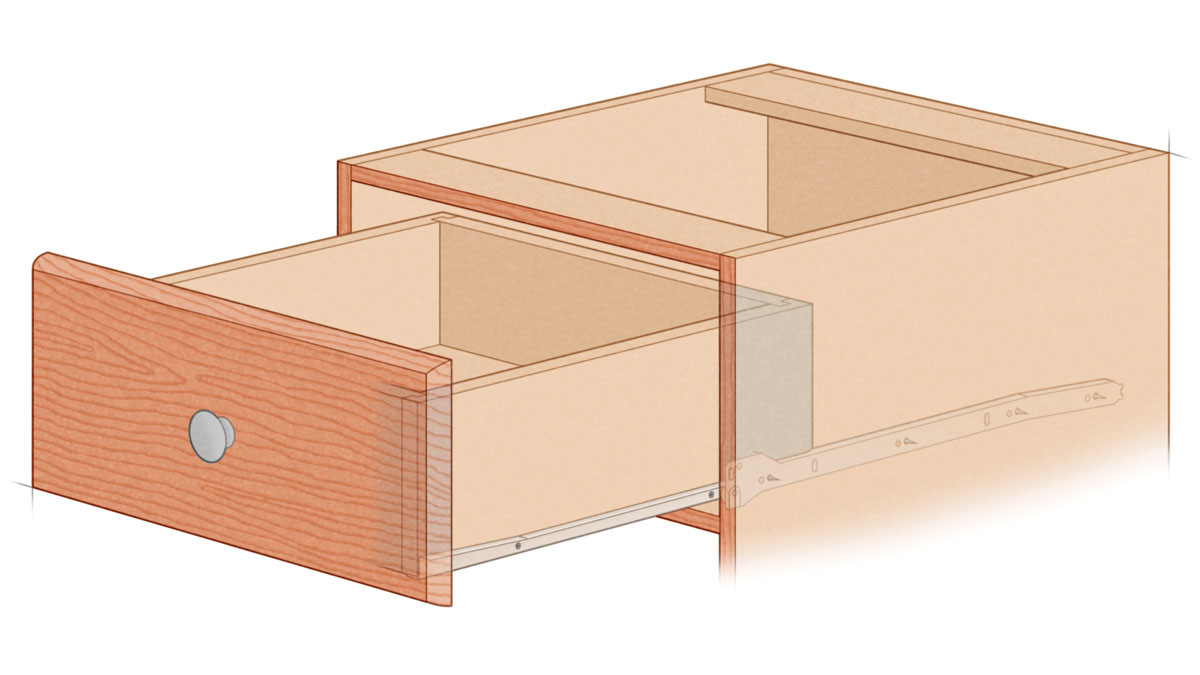
These are reliable low-cost slides. I like that if the drawer is slightly smaller, the slides will still work, because one side of the slide hooks the nylon wheel to keep it tracking correctly, and the other, straight side accommodates up to 1⁄8-in. undersizing. These slides aren’t as smooth-running and are a little louder than more-expensive options. The weight capacity is the lowest of the bunch, and there is no soft-close option. And with only three-quarter extension, there’s limited access to the back of the drawer.
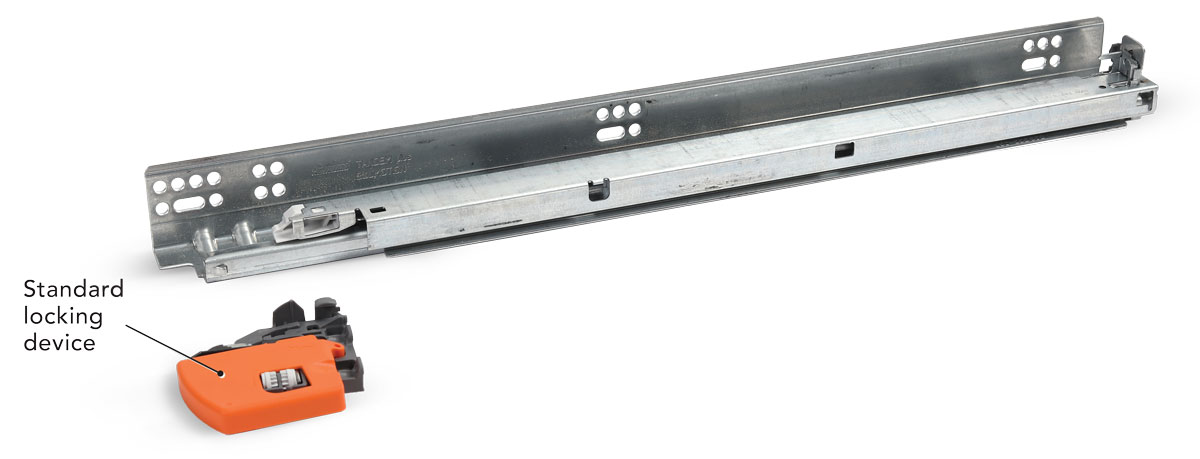
Affordable undermount BLUM Tandem
Model no. 563F5330B
Length 21 in.
Load rating 100 lb.
Price $30
These were the first widely available undermount drawer slides I used. They’re smooth-running, they mount under the drawer box, and they’re hidden by the drawer sides when the drawer is open. The first version didn’t have soft-close, and then the feature was an add-on; now, all Tandem slides have soft-close built in. These were the first slides that I used with up/down and tilt adjustments to the drawer faces. Clips hold the drawer box to the slide at the front, and a 6-mm hole drilled into the back of the drawer holds the back of the drawer box and provides the tilt adjustment. The drawer bottom must be above the bottoms of the drawer sides for attachment and so the slides are hidden from view.
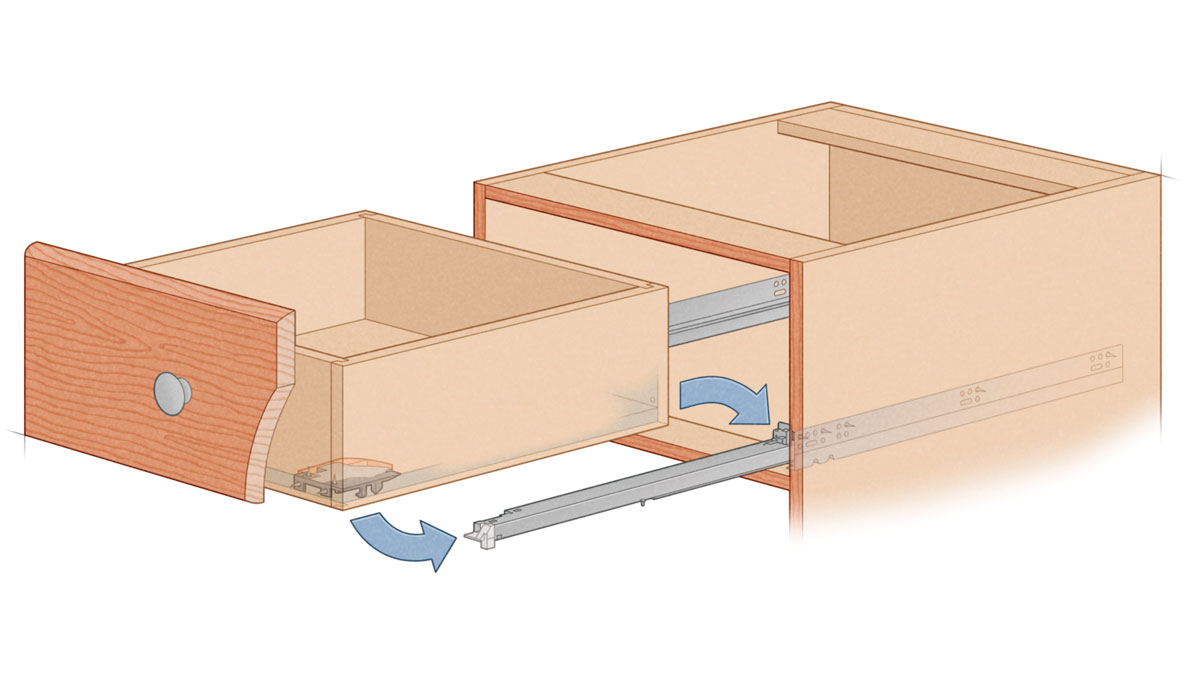
All undermount slides from Blum and Grass use the same sizing. The drawer-box front and back are 42 mm smaller than the inside measurement of the cabinet. The drawer-box sides can be any thickness up to 5⁄8 in. (16 mm). The depth of the drawer is determined by the slide length, sold in 50-mm increments. The drawer is always 10 mm shorter than the slide length. For example, a 550-mm slide holds a 540-mm drawer.
The drawbacks are no side-to-side adjustment, and the hole in the back of the drawer is hard to locate. It typically lands where the drawer bottom and the back of the drawer box meet. We use the manufacturers’ jigs to drill these holes, but the location isn’t ideal.
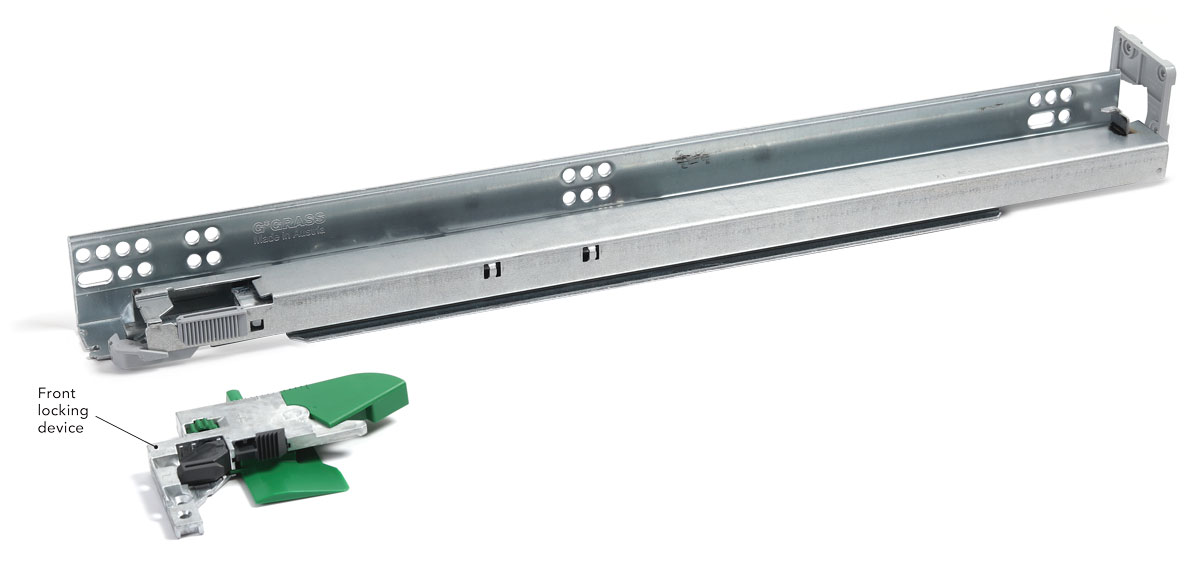
Excellent adjustability Grass Dynapro 16
Model no. F130100728204
Length 21 in.
Load rating 100 lb.
Price $35
These slides (and the Tipmatic version below) are really the only slides we use now. They are smooth-running, come in a heavy-duty version for additional weight capacity, and seem to have less side-to-side racking than all the other slides I’ve used, which is great for wide drawers. Up/down, side-to-side, and tilt adjustments are built into the front mounting clips, and there’s an add-on for in/out adjustment.
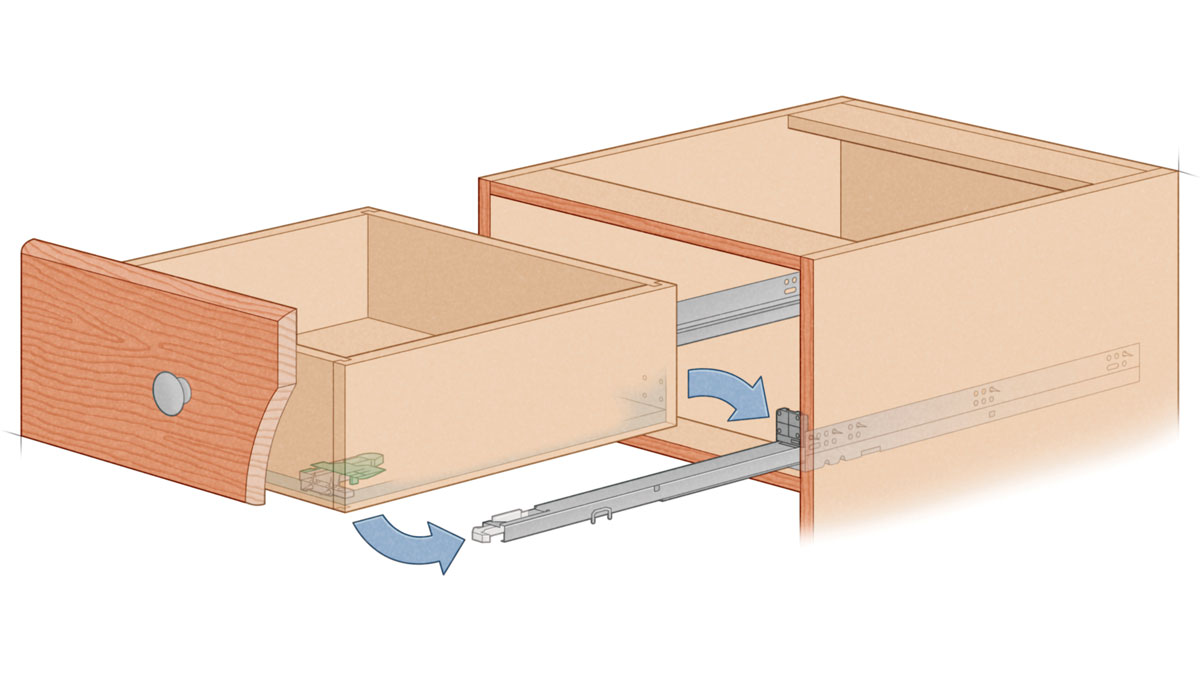
Sizing is the same as the Blum; the inside width of the drawer is 42 mm smaller than the inside width of the cabinet. The depth is the same as Blum too: 10 mm less than the length of the slide.
The big plus of these slides is the back-of-drawer mounting bracket, called an “adjustment adaptor,” that’s screwed to the drawer box and accepts the hook for the tilt adjustment. It is easy to locate the holes for the mounting screws with a shop-made or manufacturer’s jig. The setup creates a positive connection at the back of the drawer and makes the tilt adjustment easy to access and operate.
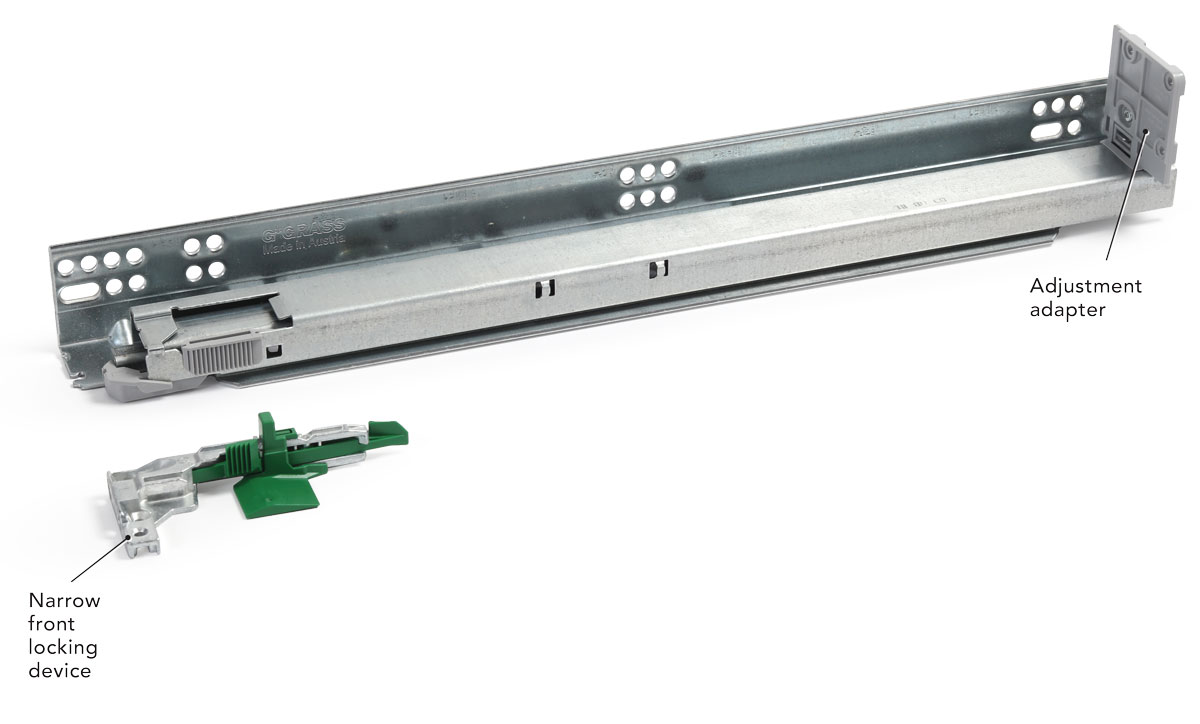
Best push–to–open Grass Dynapro 16 Tipmatic
Model no. F130116434204
Length 21 in.
Load rating 100 lb.
Price $75

These are Grass’s top-shelf slides. They have up/down, side to side, and tilt adjustments as do the standard Dynapro, but these slides also include a push-to-open feature that is built into the slides. The push-to-open has three settings so you can adjust them for each drawer weight.
Ben Scott is cabinetmaker in Maple Ridge, B.C., Canada.
To read the entire article, please click the View PDF button below.
From Fine Homebuilding #303
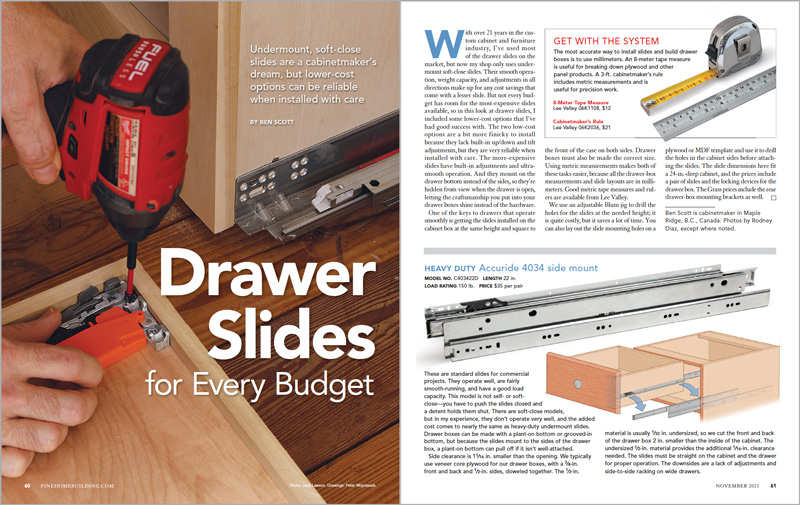
RELATED LINKS





